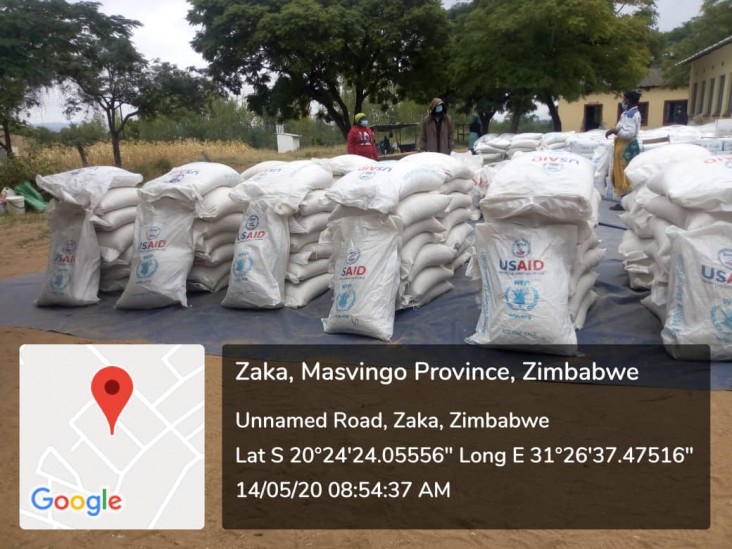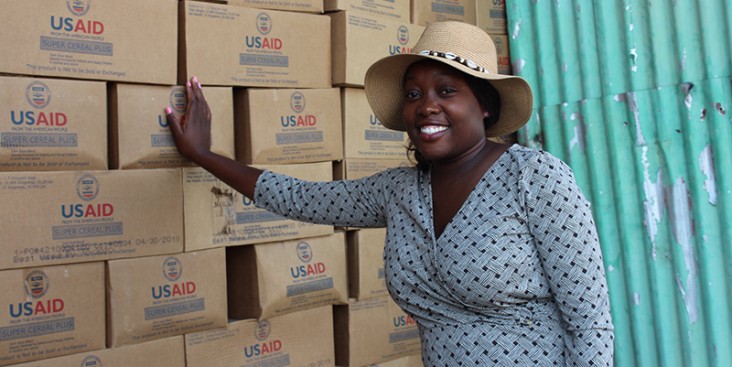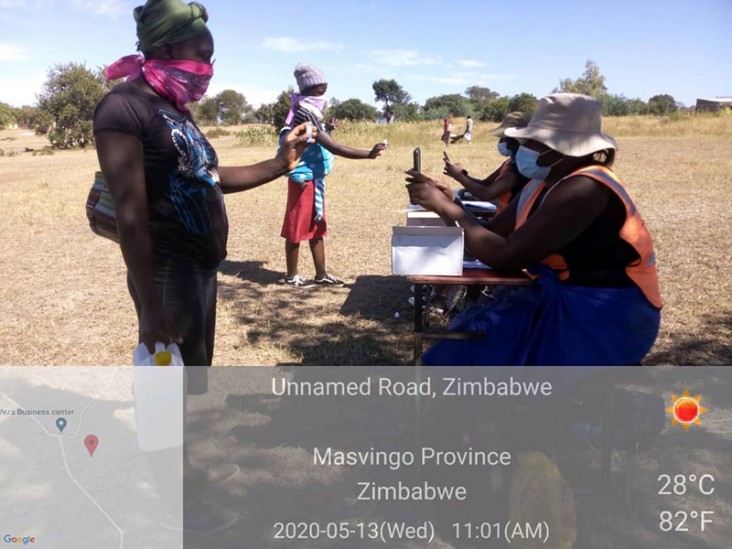Speeches Shim

"I worked with our USAID humanitarian assistance team to quickly introduce new innovative ways to monitor food distributions during the lockdown. We put in place a virtual monitoring system... With this system, I received and analyzed real-time updates and geotags from at least nine food distribution sites every month. Virtual monitoring allowed USAID/Zimbabwe to ensure that food distributions were on track and food was distributed to those who needed it most, especially during the COVID-19 pandemic," ---Erina Machoko
By Erina Machoko
July 10, 1954, marks the start of the partnership between the United States and other nations to help feed the world’s hungry and improve food security for future generations. Since then, USAID has reached more than four billion food insecure people, touching the lives of vulnerable populations around the world.
The United States Agency for International Development (USAID) contributes towards the Lean Season Assistance Program in Zimbabwe, where vulnerable households receive monthly food baskets during the lean season. USAID remains Zimbabwe’s largest bilateral donor for development and humanitarian assistance. We work each year to transform lives and communities with both short-term food assistance and longer-term resilience building programs.
USAID understands that the monitoring of food assistance programs is equally as important as the food distributions themselves. Through monitoring, we ensure the food we provide goes to the people who need it most.
As USAID/Zimbabwe’s Food Security and Livelihood Specialist, I have monitored USAID-supported food distributions for almost three years, and I have constantly strived to ensure we target and reach the most vulnerable. Our zero tolerance to misusing or politicizing food assistance remains evident in every aspect of our work.
Before the COVID-19 pandemic hit, physically visiting and monitoring sites was appropriate, as well a priority. I would regularly visit and monitor food distributions during the lean season, which usually commences in October of each year and continues up until March the following year. During the 2019-2020 lean season, USAID/Zimbabwe supported 360 distribution sites across 22 food insecure districts. I monitored food distributions as far as 700km away from Harare, where I work. In just one trip, I monitored up to four distributions at different sites in one district.

At each site, I monitor every aspect of the distribution, including the pre-distribution public address, verification of beneficiaries, grouping of households according to household size, distribution of the food, and the beneficiary reporting and feedback mechanisms. In addition, I always set aside time to interact with the people receiving USAID supported food assistance.
Just after Cyclone Idai hit Zimbabwe in March 2019, I met Gogo Thokozani Chiperengwani from Mwanyisa, a small village in Chipinge District. While speaking to her, I could see the excitement she had after she received food for her grandchildren, because the cyclone left her with almost nothing. “Now I can worry about other things, not food,” Gogo Thokozani said. This is the main reason we monitor, to ensure that people like Gogo Thokozani have the food they need to take them through difficult times.
Unfortunately, Zimbabweans have consistently experienced high food insecurity over the past decade. Recurring droughts and long dry spells have contributed to Zimbabwe’s decline in agricultural productivity and over reliance on food imports from neighboring countries such as South Africa and Zambia. Macroeconomic challenges, such as high inflation and shortages of cash and foreign currency, have worsened the situation for the most vulnerable.
When COVID-19 hit, the lockdown measures made putting food on the table even more difficult for millions of Zimbabweans. We worked with our partner, the World Food Programme (WFP), and quickly modified food distribution practices to keep staff and food assistance recipients safe. Together with WFP, we reached vulnerable people with food assistance, while reinforcing social distancing and hand washing at distribution sites. In just two weeks, USAID, through WFP, provided food for more than 930,000 vulnerable Zimbabweans.
I also worked with our USAID humanitarian assistance team to quickly introduce new innovative ways to monitor food distributions during the lockdown. We put in place a virtual monitoring system, which included: receiving and organizing geo-tagged food distribution photos and videos; conducting live WhatsApp video calls at distribution sites; reviewing beneficiary feedback from a toll-free number; and hosting virtual post-distribution discussions with implementing partners. The geo-tagged photos helped me track in real time where food distributions were located and when they were done. Live WhatsApp video calls allowed me to interact with beneficiaries at the site and monitor the distribution process, drawing my attention to key concerns such as ration sizes and adherence to the set global and local health guidelines.
With this system, I received and analyzed real-time updates and geotags from at least nine food distribution sites every month. This remote monitoring allowed USAID/Zimbabwe to ensure that food distributions were on track and food was distributed to those who needed it most, especially during the COVID-19 pandemic.
In addition to the virtual monitoring system, USAID has a robust feedback system in place. We worked with our partners to ensure beneficiaries have multiple opportunities to report any grievance or incident of politicization of food aid. There is a suggestion box, a toll-free phone number, and a help desk at all food distribution sites, and our partners follow up on every concern that is reported. People can also contact USAID directly.

An important question we are often asked is how we target the vulnerable people who receive our assistance. USAID partners use Community Based Targeting (CBT) at the village level to select food aid beneficiaries. Villages use their own unique food insecurity indicators to select the most vulnerable households. These might include households that failed to harvest any crops or households that beg for food within the village. This process is done in the presence of the implementing partner staff to ensure transparency and accountability and is only valid when at least 70 percent of households in the village participate in the selection process. Using this CBT approach, villages develop a list of the most vulnerable households in their community, who are then prioritized for food assistance.
USAID provided food assistance to approximately 1.8 million Zimbabweans between August 2019 and April 2020, and is now helping WFP expand its urban programming by supporting a cash-based assistance program to reach over 100,000 people in eight urban areas. Under the USAID award, WFP will utilize urban food security 2019 data to target the most food insecure families who have lost incomes and purchasing power due to COVID-19, have poor water and sanitation conditions, and are living in areas prone to outbreaks of diseases. In addition, USAID will provide $60.55 million toward the WFP 2020/21 Lean Season Food Assistance program. This assistance will begin in August and will feed nearly one million people during the peak of the lean season, from January to April 2021. We intend to use our virtual monitoring system to ensure these funds reach the most vulnerable people.

Comment
Make a general inquiry or suggest an improvement.